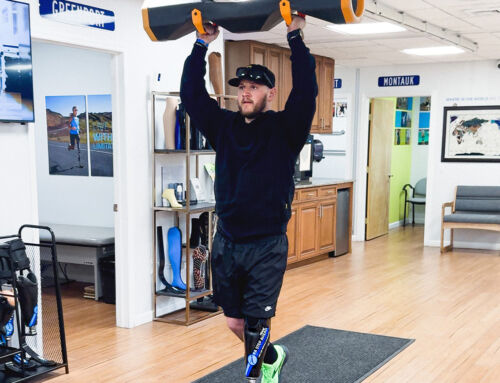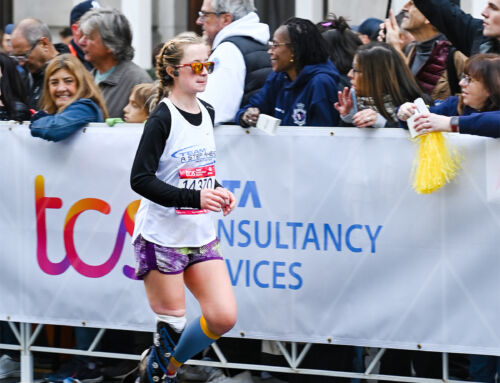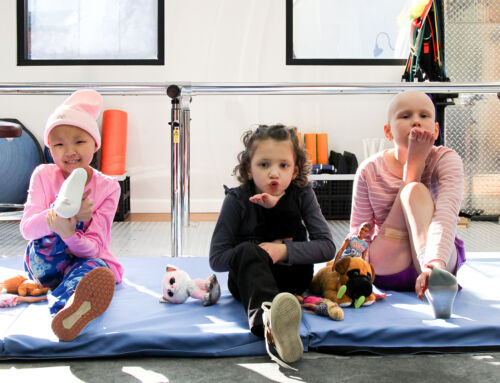IRONMAN is not hopscotching and Kona, where its world championship takes place every October, isn’t Disneyland. This reality makes it all the more exhilarating when a single athlete experiences both the heartbreaking lows and dizzying triumphs this sport is capable of dishing out.
Consider Sarah Reinertsen. Earlier this year she ran seven marathons on seven continents in seven days. She finished in seventh place in The Amazing Race 10, which covered 40,000 miles across 13 countries. She was featured on the cover of Runner’s World and was named one of the magazine’s “Heroes of Running.”
All of this isn’t bad for a lady with one of her legs made out of aluminum and titanium.
Reinertsen came into this world with a congenital abnormality that prevented her left leg from growing along with the rest of her. At the age of seven, she looked the harsh reality in the eye: Why be saddled with a limb that was holding her back when there were machine-made alternatives to achieving the mobility she so badly wanted? Realizing that her own leg was more of a liability than an asset, she made the remarkably grown-up decision to do away with it.
“I was told by the doctors that I would be able to do more with a prosthetic leg than with a stiff leg brace,” Reinertsen told me. “And I’d already spent time in a stiff leg brace and hated it so I was ready for an upgrade.” It was an above-the-knee (ATK) amputation which, as I would learn after writing about and coming to know many physically challenged athletes, is a very different kettle of fish from a BTK. You have no direct brain-initiated control over any of the hardware hanging below your hip, nor any muscle to generate motive power. Until relatively recent advances in prosthetic engineering, the only way to walk was with crutches.
Even now, walking is no walk in the park for Reinertsen: It’s a combination of lifting and swinging the hip to make the cleverly engineered hinges of the prosthesis articulate in a way that mimics a natural gait.
And that’s just to get to the grocery store. Running takes it to a whole new level. Running a marathon is on a different astral plane entirely. Experienced challenged athletes make it look easy, but it isn’t.
“It’s completely different biomechanics than walking,” Reinertsen says, “so it’s learning a completely new style of balance, rhythm, etc. An amputee typically uses 40 percent more oxygen and twice the energy than our biped counterparts.”
And then there’s biking. You might think that a repetitive circular motion would be a relatively easy thing to configure and power. It is, except for one small detail: Reinertsen has no quads on her left side, the muscles you use to turn pedals. In order for her to power a bike, she has to rely on her good, muscled leg to bring the other pedal into the up position, then shift her weight to her left hip so her body weight rather than leg muscle pushes down on the left pedal, then lean quickly the other way so it can come back up again.
In other words, one leg is doing nearly all the work. Reinertsen explains: “Through Computrainer tests I know that I get about 80-90 percent power out of my one good leg—I only get about 10-20 percent out of my prosthetic leg on the pedals—and with a prosthetic knee I can’t get out of the saddle at all, so I have to sit and grind out every hill.”
“Becoming an IRONMAN truly changed my life, and continues to touch so many things in my life even after all these years.
After some training and a lot of falling you start to get the hang of it and can make it down the block without running into any trees—a not insignificant moment of triumph.
Which brings us to the IRONMAN. That’s 112 miles of riding—up hills and in strong winds, a lot of it coming at you sideways.
As of 2004, no female ATK amputee had ever finished any IRONMAN, much less the toughest one of all, in Kona. Telling that to Reinertsen was like tossing a sirloin in front of a starving Rottweiler.
“Jim MacLaren was my inspiration,” she says. “I figured if he could do it on one leg so could I. He also told me he didn’t know if a woman could do it! So that was the throwdown.”
She qualified for the 2004 IROMAN World Championship at IRONMAN 70.3 Buffalo Springs, trained hard, went to Kona, swam brilliantly, crushed the bike and loped an easy 26.2 miles to become the first female ATK amputee to cross an IRONMAN finish line.
At least that was the plan. As I said, IRONMAN is no fairy tale. In reality, Reinertsen struggled on the swim, got slammed with winds on the bike, was sick to her stomach on the way back from Hawi, and never made it to the run because she had missed the bike cutoff. I still remember the sight of her sitting on a folding chair near the finish line, gamely calling congrats to finishers coming across the line to the soundtrack of race announcer Mike Reilly calling “You are an IRONMAN!” to everyone but her, and finally, unable to contain the bottomless disappointment, losing it and crying uncontrollably.
That lasted about 20 minutes. Then she said to her mother, “I’m doing this next year.”
Wait. What?
“I’ve got unfinished business.”
Unfinished business became her motto and her mantra. But exactly how she was going to finish the business wasn’t very clear. It’s hard to imagine how she could train any harder than she already had.
Then the good people at Cannondale heard about her and got in touch, knowing she’d ridden a bike built for a six-foot male with two good legs. They measured her from head to toe for building from scratch bike tailor-made for a petite monopod who was one-quarter bionic.
“To get a bike custom fitted for me was a game changer,” she says. “There were no tri bikes my size off the shelf so they made a custom one fitted to my geometry. I also had the privilege of meeting the factory workers who made my custom bike—the welders, the painters, etc.,—so I really felt connected to the bike and the whole team … the bike also said ‘Unfinished Business’ so it was the thing that inspired me on every training ride and of course, during the race, I would look down and see that and feel my purpose and just keep pedaling harder.”
And, as it turned out, she did train harder, taking a leave of absence without pay from her job. The thought of once again disappointing her family, her sponsors, the employer who gave her the leeway to train, and the packs of reporters seemed unacceptable.
Not that she thought it was any kind of done deal. “I was filled with fear and doubt about not finishing again, but it was also the driving force for me to keep going.”
She qualified for the 2005 IRONMAN World Championship at IRONMAN 70.3 Hawai’i, went to Kona, swam brilliantly, crushed the bike and loped an easy 26.2 miles to become the first female ATK to cross an IRONMAN finish line.
I was just kidding before but she really did it this time, with a ridiculous grin on her face from start to finish and nearly two hours left on the cutoff clock by the time she sprinted (you read that right: sprinted) across the finish line, exactly one hour faster than her “dream time” of 16:05.
“The IRONMAN finish line was even more magical than I had ever imagined,” Reinertsen said. “I literally felt like I floated across that finish line. To become the first woman on a prosthetic leg to finish the Hawaii IRONMAN, 20 years after the first man did it [Pat Griskus in 1985] was a dream come true.”
There was a three-hour awards banquet the next evening and the only thing I remember about any of it was Reinertsen on stage talking about finally taking care of business. Had there been a roof, it would have been brought down by the crowd’s response.
The other day I asked her what the 40th anniversary of IRONMAN means to her.
“Becoming an IRONMAN truly changed my life, and continues to touch so many things in my life even after all these years. It’s helped me find strength and confidence not just in sport, but in all areas. I’ve also made friends through IRONMAN that have come to seem like family.”
I started off by saying that IRONMAN isn’t a fairy tale and Kona isn’t Disneyland. Normally that’s true, but for this gutsy princess, the most heralded course in triathlon is where wishes come true.
by: Lee Gruenfeld
Source: http://www.ironman.com/triathlon/news/articles/2018/04/40th/sarah-reinertsen-unfinished-business.aspx#ixzz5CSRnBmpI





